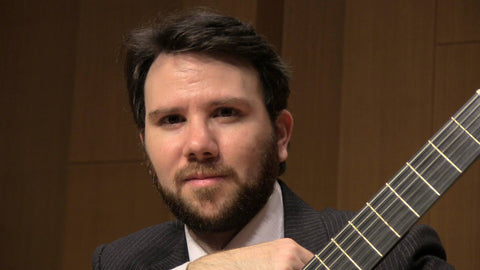
Three choices you can make when experiencing pain:
- Ignore it and hope it goes away.
- Obsess about it and comb the internet trying to glean some information that might teach you something. (Maybe that’s how you found us!)
- Go to a doctor and explain to them about your bow arm, embouchure or upcoming concert and hope they can meet you on that level.
Although this shouldn’t be used as a diagnosis, having a small physical vocabulary is going to go a long way in figuring out what might be going wrong and how best to talk to your healthcare provider about it. I can’t stress enough though that your best move in recovering from an ache or pain is to stop what you’re doing and rest.
Are you resting now? Great. Then let’s explore the five big categories of internal injuries.
Sprains
A sprain is a tear or an overextension to a ligament. (Remember them?) Ligaments are the tissues that attach bones with bones in a joint. That’s why we often sprain the narrow places where our bones meet, like our ankles or our wrists. Damage to a ligament is not very likely due to instrumental practice because ligaments are tough tissues and usually need a harder impact or stress to cause the injury.
If you take a fall on your wrist, roll an ankle on the marching band field or move a heavy instrument improperly then you may run the risk of a sprain. Otherwise in your music practice the more likely culprit of injury will be...
Strains
A strain effects a tendon or a muscle - basically our soft tissues. You can remember it as the T in strain standing for the T of tendon. Tendons are what hold our muscles to our bones.
Overuse from prolonged repetitive motion, improper gear usage or sitting or standing in an awkward position will up the likelihood that you will experience a strain to your tendons or muscles. Did you notice that the list of ways to cause a strain look like a picture of what instrument playing is?
Sprains and strains look and feel similar on the outside so doctors will need to put the pain in context. Knowing that instrumental practice habits are a picture perfect set up for a strain will help identify the problem accurately as well as how to solve it. One other helpful identifier is that sprains often bruise - an external tell, while strains often lead to muscle spasming.
To prevent both sprains and strains make sure you are
- Conditioned - that means staying in physical shape in both strength and endurance and increasing in both areas equally and slowly.
- Warmed up - ease into playing and promote circulation for healthy muscle usage.
- Rested - When you’re tired you're less likely to play with accurate form.
If you’re past prevention and need to recover from either sprains or strains, know that both will require time away from practice. Remember that RICE, Rest, Ice, Compression and Elevation, is your surest way at recovering from both sprains and strains as well as...
Tears
(Not tears, although I’ve had those as a result of music practice as well.)
A tear can affect a ligament, a tendon or a muscle and they happen when a strain gets out of control. Strains are essentially micro tears and those things can start to accumulate into a macro problem. While you may experience an acute tear or strain as a result of stretching improperly while still cold, or a sudden impact, musicians are most likely to experience chronic strain. Chronic strains happen when a repetitive motion is engaged in too often for too long without proper rest.
And, not to scare you, but if the tear is bad enough it can require surgery to repair. Imagine how long you’d be out of practice then! But good news, that’s not the norm. What is normal though is that once you move from strain to tear you are looking at multiple months of rest to a full recovery.
Pulls
Pulls are another word for strains and are more often mentioned in the context of an overextension then a repetitive motion. Make sure that you ease into stretching with warm muscles. Often times our stretching is done in the tendons rather than the larger muscle group. Keeping circulation through the muscles and moving into stretching postures slowly while focusing on sensation over form, will help you avoid a pull.
Breaks
This is a word reserved for damage to bones. All breaks are really just fractures. Sometimes the fracture will be a small hairline fracture, and sometimes it will be large enough to split the bone in half. Fractures always require direct impact to the bone so be cautious as you load heavy equipment or instruments. Late night gigs and tired minds often lead to fatigue and accidents.
As long as you treat your body with the same care that you treat your gear, you’ll avoid all of these issues. There’s only one you so implement cross training and rest for peak performance, less pain and more music!







